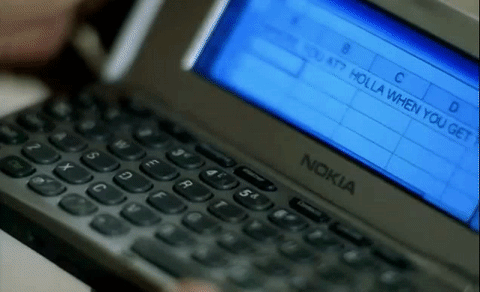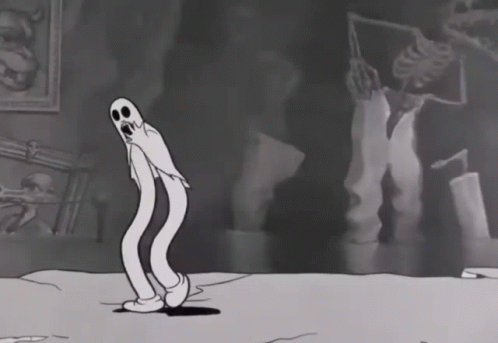Prepare for any Interview

So you’ve crafted a great CV and written a fantastic cover letter that highlights why you’re the ideal candidate. You’ve been diligently applying to positions that match your knowledge, skills, abilities, and expertise, and finally, finally, you’ve received the great news that the company you applied for wants to bring you in for an in-person interview. Congratulations! This is great news, but still only one step in the entire recruitment process.
Whether this is your first time going in for an interview, or your hundredth, this is a nerve-wracking experience for most people. There are a few crucial things you want to do in order to prepare and ensure that when you do go in and the meet the hiring manager, you can present the absolute best version of yourself.
DO YOUR RESEARCH
In terms of preparing for the interview, this is arguably the easiest thing you can do. Do a quick search online of the company, and you’ll find lots of resources provided by the company itself on their mission, vision, and values. Make sure you not only know what they are but how they relate to the role you’ve applied to.
The online search will also yield results from services like Glassdoor, which will give you greater insight into the management of the company and what people particularly enjoy about working there. This will present general themes that you can use to build your answer.
As someone who has conducted hundreds of interviews, it’s shocking to me how many people completely miss on the softball question, “Why do you want to work at our organization?” This is guaranteed to be the first question in any interview, and whether or not you nail it, it sets the tone for the rest of the interview
The other area you want to do research into is the position itself, and the role it plays in the context of the larger organization. Likely, this role will be similar to things you’ve done in previous roles, but demonstrating how you can translate your existing skills into the new work environment will show the hiring manager that you have a greater understanding of the role, what you can offer, and what excites you about the work you will hopefully be doing. As a result, you should be able to hopefully knock the next softball question, “What about this role interests you and made you want to apply,” out of the park.
PRACTICE YOUR ANSWERS
The next step in your interview prep should be practicing the answers to any and all questions that might come up. Again, if you do a quick online search for the interview questions related to the role that you’re applying for (i.e. project manager interview questions), you will find the entire first page filled with different websites offering different examples of questions that can, and often will be, asked during the interview.
One thing that I do personally is find 20 or so questions, and write out my answers to each one. I try to keep them as concise but information-packed as I can. While in many interviews, sometimes one question can lead to a series of tangential conversations, the worst thing that you can do is ramble on and on without a clear end in sight or proper answer. Try to keep each answer to a maximum of five minutes, as this will give you enough time to answer using the S.T.A.R. method (more on that later).
The other thing that I do is have someone ask me the questions in random order. It’s easy to practice and memorize the answers in a set order, but that’s almost never the case during the interview. The questions may be in a different order from what you practiced, and that can and will throw you off momentarily. By practicing your questions out of order, it will help you better retain the answers in your memory, versus using the previous question as a sort of trigger to pull up the necessary information for the next question in the sequence.
USE THE S.T.A.R. METHOD
When answering any interview question, you should have an example at hand. One way to lose marks is to have the interviewer prompt you for an example to back up your answer.
S.T.A.R., for those of you not familiar, stands for Situation, Task, Action, and Result. This approach gives context to the situation and demonstrates how you worked out a solution to the problem presented in the question. Remember, keep the answer short and focused, as the interviewer doesn’t need to know, nor do they care, about the entire backstory; they are simply looking for what you took away from the situation.
So, let’s look at one of the most common interview questions, “what is one of the toughest challenges you have encountered in the workplace, and how did you overcome it?”, and how you can use the S.T.A.R. approach to structure your answers appropriately.
Situation: You want to first articulate to the hiring manager the situation that you were in so that they have context. Remember, context is key. What was the problem, and what lead to it occurring? Remember, it’s excruciatingly easy for the interviewer to know when you are using a completely irrelevant anecdote, or if the example provided is being made up on the spot. It’s crucial to find a scenario from a professional, rather than personal setting, that actually happened, that you can expand upon in the next three sections.
If you’re struggling to think of an answer, or if you’ve blanked on our prepared answer, take a sip of water or pause for a moment to think. Hiring managers will appreciate you taking the time to think of an appropriate answer. It’s more than okay to take a few seconds before providing your example.
Once you have the situation selected, it’s time to articulate what happened so that the interview has all the necessary context and can easily visualize the challenge being presented. The goal here is paint as clear a picture as you can of the situation you were in and emphasize just how complex it was. This way, when you get to the end result, it will hopefully seem that much more impactful.
Task: Next, talk about the task at hand, and inform the interviewer what each person was responsible for doing. You’re telling this story for a reason, because you were involved in some crucial manner. You don’t need to go into too much detail, but this is where you make sure the interviewer understands exactly where you fit in.
The task section is not the action section, meaning this is not what you did to resolve the problem, but rather is dedicated to giving the specifics of what your responsibilities were in the given scenario.
Action: Now that the interview has a sense of the scenario, and what your role involved was, it’s time to explain what steps you took to reach the desired goal or solve the problem at hand. Please, resist the urge to use vague language like, “I did research,” or, “I worked hard on solving the problem.” This does nothing other than show the interviewer you don’t know what it is you’re talking about.
Instead, use this chance to show the impact of your contribution, and dive into meaty specifics. Did you work with a team, use a particular piece of software, or form a detailed plan? These are the things that the hiring manager really wants to know, so dig deep and ensure you give all the necessary pieces of information about what you did. Explain the actions involved in overcoming the problem and walk them through your thought process.
Result: Finally, this is your time to demonstrate exactly how you made a positive difference. This final portion of your response should share the results of the actions you made, and ideally, the result should be a positive one. Remember, no interviewer is going to be thrilled with a result that ends the customer still leaving unhappy, the problem being left unresolved, or with you getting fired.
However, should this be the case, try to spin the less than desirable end result into something positive. Talk about what you learned during the process, and how you’ve incorporated those learnings into future projects of yours to have better, more desirable outcomes.
Quantify your results if possible. It’s a great way to demonstrate the impact you’ve had on a project or company, and it lets the interviewer know that you’re focused on results.
The last piece of advice in this section is that interviewers don’t just care about what you did, but they also want to know that the actions you took mattered. This is where you bring home the point about our positive results by quantifying them where you can. Remember, numbers are your friend.
So, going back to the question, “what is one of the toughest challenges you have encountered in the workplace, and how did you overcome it?”, how can you incorporate S.T.A.R. to answer this appropriately? Well, it can look something like this:
- S: At my last role in xyz company, the client was unhappy with the first draft of the campaign strategy slide-deck presentation, and wanted to incorporate significant changes at the eleventh hour.
- T: The primary task was putting together a new slide-deck presentation so the client would be happy with our output, and would stay on as a customer. We scheduled a late-night brainstorm session, and I took the lead to divvy up the work appropriately.
- A: We looked at previous campaign presentations that were successful in the past, and incorporated some of their messaging and strategies into the new draft for our client. We also analyzed the feedback given on those previous campaigns and made sure that we addressed them in the new presentation.
- R: Ultimately, we were able to pull together a new presentation, and the client was thrilled with the work! They have since incorporated many of the new ideas suggested, have seen a significant increase in sales growth, and have retained us as their external partner.
ASK QUESTIONS
After the hiring manager has gone through and asked you all the questions they have for you, you will generally be given the chance to ask questions of your own. Come prepared. Interviewers always appreciate someone who not only ask questions, but questions that are thoughtful. It demonstrates to them that you have come prepared and are enthusiastic about the role and the organization.
A FEW OTHER THINGS
The hiring manager will likely have a copy of your CV and cover letter on hand, along with their interview questions, but it’s always a good idea to print a few extra copies to distribute just in case. The benefit of this is that should they not need it, you can keep a copy on the table for yourself to reference during the interview should you need it. For example, if they ask a question relating to your previous work history, quickly glancing at your CV can jog your memory faster than if you stopped to think. Interviewers do not expect you to have every little detail memorized for the interview, so do not be afraid to reference your CV.
One notable thing that happens when you go in for an interview is that you get nervous, and when you get nervous, sometimes your mouth can feel dry. Bring a water bottle in with you. This will not only keep you hydrated, but it will give you a chance to pause in-between being asked a question and providing them with your answer.
Finally, bring in a notepad and a pen, and ask if you can take notes during the interview. This is a great way to quickly jot down key pieces of information. Sometimes during the interview, something will stick out to you that you may want to follow-up on at the very end. Rather than trying to remember that while also trying to answer the questions as best you can, if you can quickly jot that point down, it will be easier for you to remember and bring up at the end.
If you take the time to thoughtfully prepare for your interview, there’s a good chance that you’ll make a great impression. After all, the interviewer has gone through your application and liked what they saw on paper, so now it’s time for you to really shine and show them why they should be hiring you instead of someone else.




